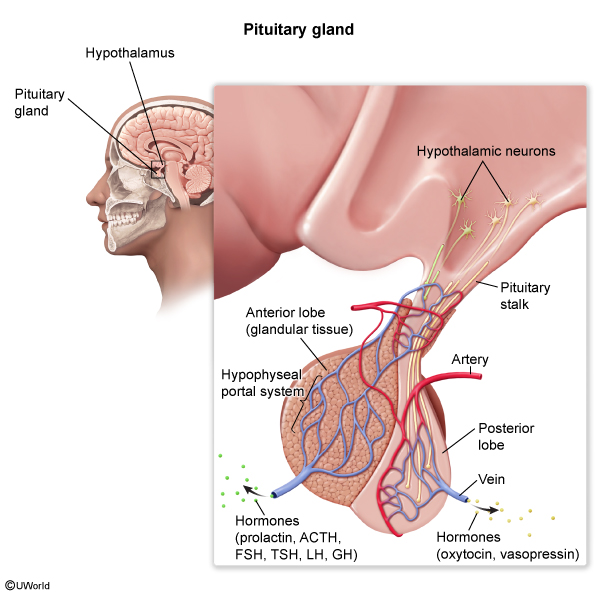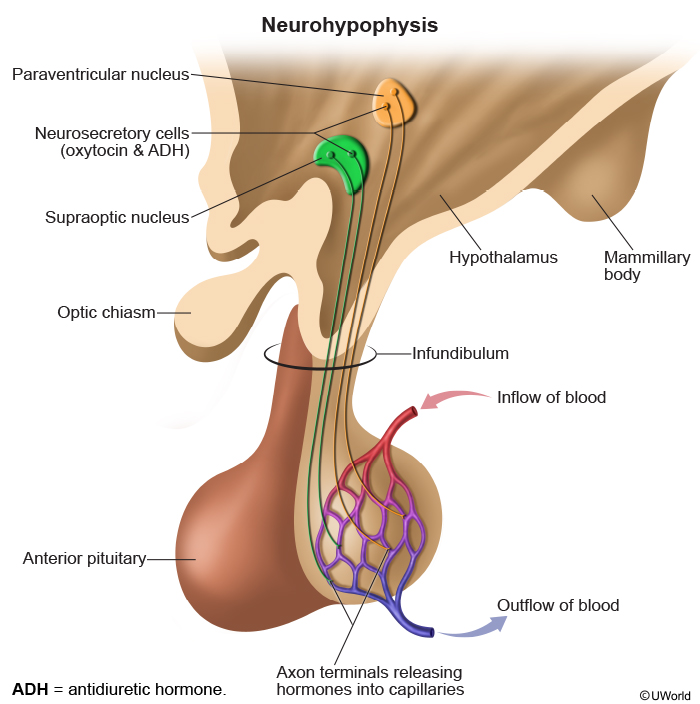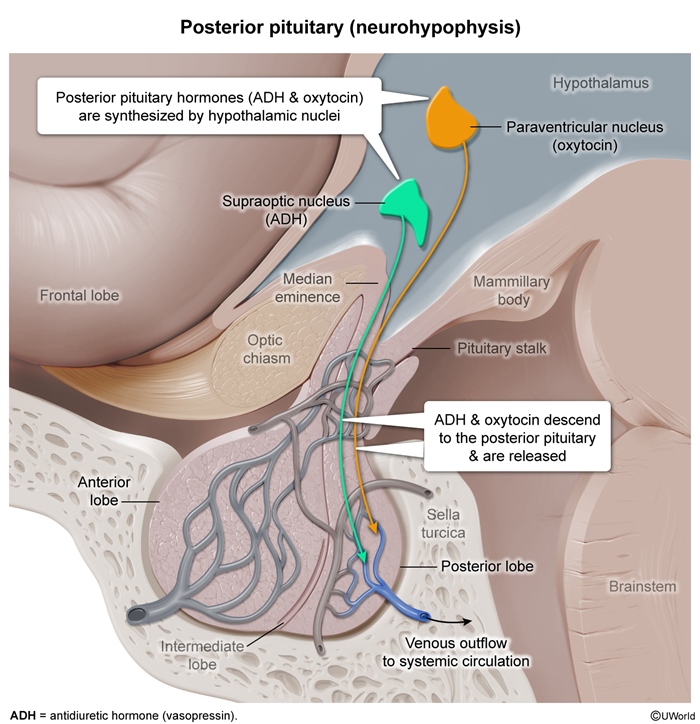Sheehan Syndrome
Article Sections
Introduction
Sheehan syndrome, also known as postpartum pituitary infarction, is a rare and potentially life-threatening condition characterized by infarction of the anterior pituitary gland following significant postpartum hemorrhage. This leads to varying degrees of pituitary hormone deficiencies.
Pathogenesis
The hypothalamic-pituitary axis involves the hypothalamus, which is the regulatory center of the endocrine system, and the pituitary gland, which is divided into the anterior and posterior pituitary glands.
The anterior pituitary gland contains acini comprising different types of hormone-secreting cells that release various hormones in response to hypothalamic-releasing hormones (Figure 1). These include the following:
- Corticotrophs, which secrete ACTH
- Thyrotrophs, which secrete TSH
- Lactotrophs, which secrete prolactin (PRL)
- Somatotrophs, which secrete growth hormone (GH)
- Gonadotrophs, which secrete LH and FSH
The posterior pituitary gland differs from the anterior pituitary gland in that it contains nerve axon terminals that store and release antidiuretic hormone (ADH) and oxytocin (
Continue Learning with UWorld
Get the full Sheehan Syndrome article plus rich visuals, real-world cases, and in-depth insights from medical experts, all available through the UWorld Medical Library.
Figures



